Does blood pressure look at high or low pressure? Is there a difference between the two?
Hello, I'm Dr. Knowles Blue.
Blood pressure, for most people is a very familiar name, as long as you have been to the hospital, have done a physical examination, have measured the blood pressure, especially for those who have high blood pressure patients, that would be more familiar. Take out an electronic sphygmomanometer, tie on the cuff, gently press, after a few dozen seconds will come out two figures, a larger, a smaller, larger figure is called systolic blood pressure, also known as high-pressure, smaller, this value is called diastolic blood pressure, also known as low-pressure. Just like other data measurements, blood pressure measurements have units, and blood pressure is measured in millimeters of mercury. The standard blood pressure for a normal adult is less than 120/80 mmHg. So what is the significance of each of these two numbers? Which one is more important? What are the dangers of their elevation and lowering? Let's find out separately.

1. Why are there two values?
(1) What is blood pressure?Our circulatory system consists of the heart and blood vessels throughout the body. The constant flow of blood in the cardiovascular system puts a certain amount of pressure on the walls of the blood vessels, which is called blood pressure. We can also simply understand the pressure that the gas inside the tires of a car exerts on the tires.
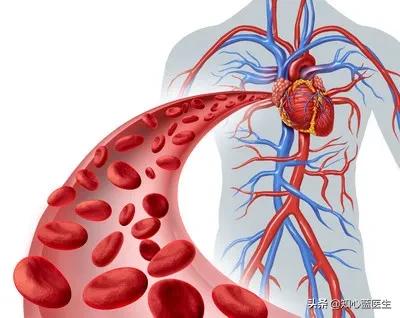
(2) What do the two values represent?All other organs of our body can remain in a relatively static state for a short period of time, even breathing, we can control it by holding our breath, only the heart has no way to control it, it is constantly beating. When the heart contracts, the blood is sent to the arteries, more blood in the arteries, the pressure is naturally high, this is the systolic blood pressure; when the heart stops delivering blood to the arteries in diastole, and the blood in the arteries will return through the veins, then the blood in the arteries is reduced, the pressure is naturally low, this is the diastolic blood pressure. And the difference between these two values is quite large, usually about 40 mmHg, so I have to write these two values separately.
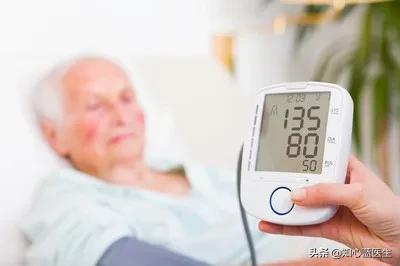
2. What are the dangers of elevated high pressure?
(1) Long-term damage:Elevated high pressure, or what we can narrowly understand as systolic hypertension (to meet the diagnostic criteria, of course), increases the shear force, the irritation of the blood against the walls of the blood vessels, and this irritation is long-lasting and accumulates over time. Every time the heart contracts, it causes an irritation to the blood vessel walls, and the heart has to withstand more resistance. If a person's heartbeat is 75 beats per minute, then roughly speaking, the total number of heartbeats in a 24-hour day is about 100,000, and what about a month or a year? Our circulatory system is running a marathon, and the increased burden of each step can have a big impact on long-distance running. Long-term high blood pressure can lead to damage to target organs, blood vessels worn out calluses, including the brain, kidneys, heart, large vessels, etc., the corresponding performance of cerebral infarction, heart attack, heart failure, arrhythmia, renal failure, etc..
(2) Acute damage:For a sharp rise in blood pressure, such as higher than 180, or even 200 , 220 mmHg, on top of the inherent diseases of the heart, brain, kidneys and blood vessels, hypertensive emergencies, such as cerebral hemorrhage, aortic coarctation, acute myocardial infarction, etc., which are diseases that can be life-threatening in a short period of time.
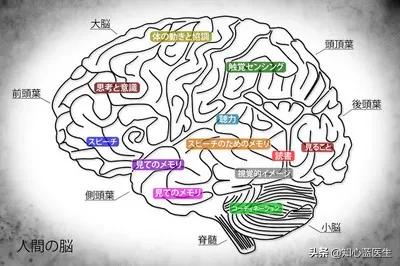
3. What are the dangers of elevated low pressure?
(1) Long-term damage: As with elevated high pressure, any elevation of pressure can cause cardiovascular and target organ damage. The difference is that the value of low-pressure elevation is generally not too much, high-pressure 160, 180 of the large number of people, than the normal value (120) rose 40, 60; and low-pressure elevation to 120, has been rare, most of the 90 ~ 110, from the value of the viewpoint, only than the normal value (80) rose 10 ~ 30, it is easy to incorrectly think that the damage to blood vessels is smaller. In fact, this understanding is wrong, the correct understanding is in accordance with the classification of hypertension, systolic hypertension class 1 (140) and diastolic hypertension class 1 (90) damage is equivalent, systolic hypertension class 2 (160) and diastolic hypertension class 2 (100) damage is equivalent, systolic hypertension class 3 (180) and diastolic hypertension class 1 (110) damage is equivalent.
(2) Acute damage:The occurrence of acute damage in hypertension is related to the absolute value of the blood pressure increase, so people with elevated low pressure have relatively few acute complications such as aortic coarctation; after all, there are not as many absolute values of low-pressure increases as there are of high-pressure increases.
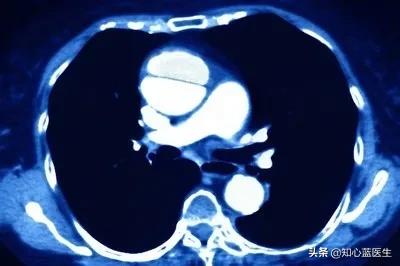
4, the harm of lower blood pressure
Whether high or low pressure, the physiologic role in the human body is to supply blood to the organism. In normal adults, high pressure is usually greater than 90 mmHg, and low pressure is usually higher than 60 mmHg. However, in some women, long-term high pressure of 80 to 90 mmHg and low pressure of 50 to 60 mmHg are not considered pathological if there are no uncomfortable symptoms. If the original blood pressure is high and there is a significant drop in blood pressure over a period of time, and uncomfortable symptoms occur, attention should be paid to this and prompt medical attention should be sought by a physician to determine whether intervention is necessary.

In summary, the body's blood pressure consists of two parts: high and low pressure, the standard blood pressure is lower than 120/80, and both low and elevated high pressure can be detrimental to the body. Comparison of systolic and diastolic blood pressure damage, the degree of long-term damage is mainly referred to the level of hypertension, acute damage in the systolic blood pressure elevation is more common.
Follow Dr. Know Your Heart Blue to learn more about the heart.
If we are talking about danger alone, then an elevated high pressure in blood pressure is more dangerous than the consequences of an elevated low pressure. This is because elevated high pressure often means that the atherosclerosis of the large arteries is more severe and more prone to cardiovascular disease. Generally speaking, a simple elevated high pressure is a lesion of the arteries themselves that cannot be reversed, whereas a simple elevated low pressure with normal arterial elasticity can be reversed.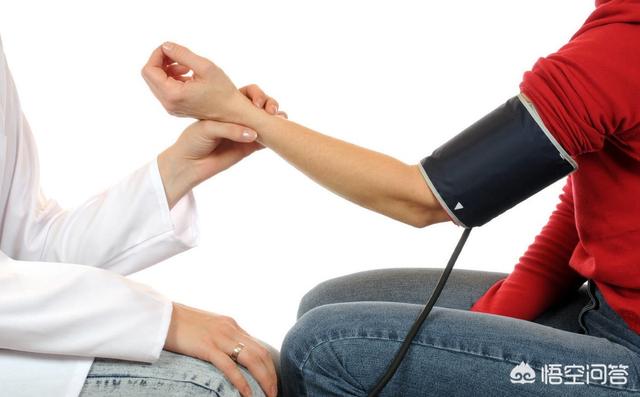
I. High and low pressure in blood pressure
1, high pressure: we usually say high pressure is also known as systolic blood pressure, refers to the maximum pressure of blood on the arterial vessels when the heart contracts to pump blood. Human arterial vessels can expand normally when their elasticity is normal, and the heart can easily pump blood out with normal blood pressure. However, due to age, heredity, diet, obesity and other factors, the elasticity of the arteries will decrease. At this point, the heart needs to increase the force of contraction in order to be able to pump out blood normally, and this is when the systolic pressure rises.
Excessive blood pressure will damage the endothelium of blood vessels, causing lipids in the blood to enter the endothelium to form atherosclerosis, and the hardened blood vessels will further aggravate the rise in blood pressure. So it is said that atherosclerosis and hypertension are the cause and effect of each other, and a vicious circle will be formed if they are not controlled. It will then involve the heart, brain, kidney, eyes, blood vessels and many other organs to develop problems.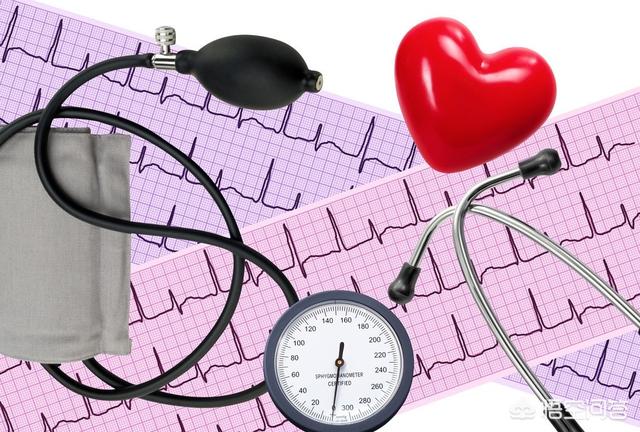
2, low pressure: we usually say low pressure is also known as diastolic pressure, refers to the minimum pressure of the arteries on the blood when the heart is in diastole. When the heart is contracting, it relies on the pressure of the heart's contraction to push the blood forward, and the aorta dilates to accommodate the blood. When the heart is in diastole, the aortic valve closes to prevent the blood from flowing back, and the elastic retraction of the aorta pushes the blood to continue to flow forward.
Factors such as mental stress, obesity, and high renin levels cause constriction of the small blood vessels in the periphery. At this time, when the large arteries undergo elastic retraction during diastole, the resistance will increase, causing low pressure to rise. Therefore, elevated low pressure will lead to a decrease in blood supply to various organs during diastole, causing symptoms such as dizziness, palpitations, chest tightness and so on.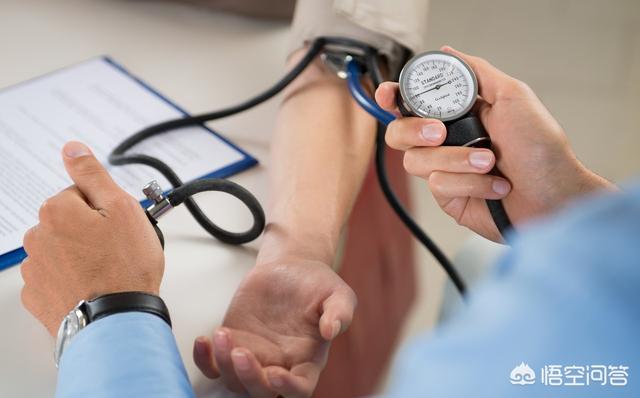
II. Hypertension and cardiovascular diseases
Systolic and diastolic blood pressures make up the driving force that keeps our body's blood moving forward, moment by moment, in a continuous cycle. Either elevated systolic or diastolic blood pressure will cause harm to the human body. Heart: Elevated blood pressure will increase the burden on the heart, causing ventricular hypertrophy, heart enlargement, and subsequent heart failure. Kidneys: Elevated intra-glomerular pressure can damage renal units and cause kidney failure. Brain: High blood pressure can cause spasms of the small arteries in the brain, causing headaches and head swelling, which can lead to cerebral hemorrhage and cerebral infarction. Hypertension also causes retinopathy and atherosclerosis.
In terms of predisposing factors to the diseaseThe higher the blood pressure, the greater the harm. Systolic blood pressure is always higher than diastolic blood pressure, so elevated systolic blood pressure is more harmful.Systolic blood pressure is a much greater early warning of cardiovascular disease than diastolic blood pressure, so in terms of risk and importance alone, systolic blood pressure is a bit more important in blood pressure.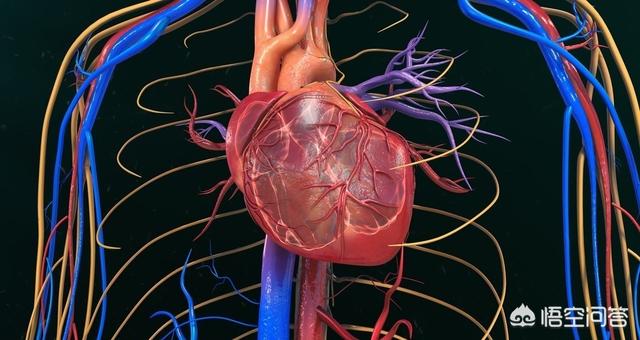
III. Different blood pressure characteristics at different ages
Characteristics of senile hypertension.is an increase in systolic blood pressure and a decrease in diastolic blood pressure. This is because the elderly have severe atherosclerosis, and when the heart pumps blood, the arteries are limited in expansion, so the heart increases its contractile force. When the heart is diastolic, because the arteries are less elastic and not dilated enough, the rebound force will be insufficient, resulting in a lower diastolic pressure and an increased difference between pulse pressures.
So the greater the difference between the pulse pressures, the more severe the atherosclerosis. And atherosclerosis cannot be reversed and can only be controlled by long-term medication.
Characterizing hypertension in young and middle-aged people.is an elevated diastolic blood pressure and a normal systolic blood pressure. This is because the arteries of young and middle-aged people have normal elasticity, and when the heart pumps blood, the large arterial system can expand normally and the heart is not subjected to much resistance. However, because the small peripheral arteries constrict, the resistance increases when the large arteries rebound during diastole, resulting in a rise in diastolic blood pressure and a smaller difference between pulse pressures.
Elevated diastolic blood pressure alone is usually due to stress, obesity or genetic factors. The arteries are not diseased and have good elasticity, which can be reversed with treatment. If left unchecked, classic hypertension, in which both systolic and diastolic blood pressure are elevated, will develop, followed by simple systolic hypertension, with a poor prognosis.
To summarize, high pressure in blood pressure has a greater warning effect on cardiovascular disease than low pressure, and elevated high pressure alone is more harmful and dangerous than elevated low pressure alone. However, no matter whether the high pressure is elevated or the low pressure is elevated, it needs to be controlled in time. Please take medication under your doctor's supervision to control your blood pressure, and consult your doctor or pharmacist if you have any problems with your medication. I am pharmacist Huazi, welcome to follow me and let me be your pharmacist.
- 1. High and low pressureequally important, as long as one is over the limit it is high blood pressure, and likewise, both are considered to be well controlled.
- 2. In general.Elderly with predominantly elevated high blood pressure,Low-pressure elevation predominates in the middle and light years。
- 3.Elderly people tend to have higher differential pressuresThe situation is not to worry, as long as the high pressure is reduced to below 140-150, there is no too obvious weakness, dizziness, blackness in front of the eyes and other symptoms, at the same time the urine volume is normal, you do not need to be too obsessed with how much the low pressure is, even if it is only forty or fifty can be accepted.
- 4. AllAntihypertensive drugs lower both high and low blood pressure, so don't fantasize that there is any drug that can lower just one of them.
- 5.Blood pressure fluctuates more in the elderlyI once had a patient whose high blood pressure fluctuated between 110-190 mmHg in one day. In this case, we can only try to keep most of the blood pressure in an acceptable range, and temporarily use short-acting drugs to lower the blood pressure quickly when it is particularly high.
The heart engine has two periods to complete the whole process of work, including systole and diastole, these two periods coordinate with each other to complete the process of blood ejection of the heart beat, to maintain the blood supply of the important organs of the whole body, these two periods of blood pressure corresponding to the systolic blood pressure (high pressure) and diastolic blood pressure (low pressure), it should be said that the two are equally important to us.
As a person ages, the high pressure tends to increase, while the low pressure tends to decrease, and the difference between the two is getting bigger and bigger, which is called the increase in pulse pressure. Therefore, if we have to say which one is more important, it should be said that the systolic blood pressure (high pressure) on the human body is a significant increase in the trend, so the high pressure is more important, the low pressure is second.
Here's what Dr. Hsu has to say about the effects of increased and decreased high pressure/low pressure
1.Acute injury due to high pressure
A high pressure ≥ 140 mmHg is called hypertension. Hypertensive urgency occurs if the patient's high pressure is above 180 mmHg for a prolonged period of time and is accompanied by damage to the heart, brain, kidneys, and other corresponding organs. Acute hypertensive injury is a key factor in the occurrence of serious cardiovascular events and damage to vital organs. For example, acute myocardial infarction, acute heart failure, acute renal impairment, aortic coarctation, cerebral hemorrhage, etc. All these menacing diseases are closely related to high blood pressure.
2. Chronic injuries due to excessive pressure
When a patient with hypertension undergoes a cardiac ultrasound, the conclusion of the cardiac ultrasound will indicate hypertensive heart disease. This is a passive hypertrophy of the left ventricle caused by chronically elevated blood pressure. Problems similar to this include chronic kidney damage, cerebral infarction, and retinopathy. Hypertension chronic damage is often a subtle effect on the body, we may not have obvious symptoms, which leads to irreversible damage to vital organs, especially the current incidence of coronary heart disease is gradually increasing trend, hypertension is to promote the progression of atherosclerosis, resulting in myocardial ischemia of the initiating factor, therefore, to reduce blood pressure, is to maintain and avoid cardiovascular complications of important measures.
3. Injuries due to low pressure
When the high pressure is lower than 90mmHg, it is called low blood pressure, long-term low blood pressure will lead to insufficient perfusion of important organs, as if we live in the 6th floor of the water pressure is insufficient to obtain water pressure, and water is essential to life, life will be seriously affected, the body is also so.
If the organs of the body have insufficient perfusion for a long period of time, secondary dysfunction will occur. The most sensitive organ to ischemia in the human body is the brain, and if there is persistent ischemia in the brain for up to 6 seconds, we will experience the symptoms of blackout and fainting. Prolonged hypotensive state will also bring the body fatigue and weakness, drowsiness, poor mental state and other signs and symptoms.
The high blood pressure in women is usually lower than normal, around 90mmHg, and some women are even lower than this level. If the above symptoms do not occur, it means that the body has adapted to the state of low blood pressure, and the function of the organs can be normalized, and this state of low blood pressure does not require special treatment. What we need to pay attention to is the hypotensive state caused by a sudden drop in blood pressure, which requires a high degree of vigilance.
4. Clinical significance of low pressure
Low blood pressure over 90mmHg, also belongs to the category of hypertension, need to be active drug intervention, to avoid long-term hypertension on the body's acute and chronic damage, but this onset of the population than the high pressure increase is significantly lower. Especially with the increase in age, the old geriatric hypertension is often characterized by increased systolic blood pressure, low pressure decreased as a significant feature, the possibility of low-pressure increase is further reduced.
In addition, we also need to recognize: the blood supply of the human coronary arteries by the heart diastolic blood pressure to complete the supply, if the low pressure is too low on the coronary artery blood supply will have a certain impact, but the human body in the normal state of the situation rarely occurs low pressure on the coronary arteries, this do not need to worry about.
In conclusion, the body's high pressure and low pressure are very important to the maintenance of life activities of the body, we usually need to pay attention to.
Focus on health, focus on cardiovascular Dr. Xu!
The value of blood pressure is divided into two indicators, systolic and diastolic, or what we call high and low pressure. In fact, exceeding the diagnostic threshold of either indicator is harmful to your health, regardless of whether it is high or low pressure.
For example, the normal adult blood pressure value standard is 140/90mmhg, if the high pressure is more than 140, and the low pressure is more than 90 can be considered to diagnose high blood pressure.
Research data show that both elevated high pressure and elevated low pressure are detrimental to health. For different groups of people, hypertension may manifest itself in different ways. For example, some elderly people tend to have elevated high pressure, while young and middle-aged people tend to have elevated low pressure.
And most people with high blood pressure. High pressure and low pressure are also elevated at the same time, and it is important to take both high and low pressure levels into account during antihypertensive therapy.
It should be noted that some hypertensive patients have a large pressure difference, such as high pressure is very high, low pressure is very low, such as 180/80mmhg, this time in the lowering of blood pressure need to take into account the low pressure level can not be too low, because too low a low level of low blood pressure also has an impact on health.
It is well known that our blood pressure hassystolic blood pressure和diastolic blood pressureThe difference between high pressure and low pressure, which we often say, some people will also be called to present the upper pressure and lower pressure, although the name is not the same, but it is the same meaning. In the face of high and low pressure, some people may be such a question: what is the difference between high and low pressure? Which one is more important? Today, Dr. Chen will talk about this question.

What is systolic (high pressure), diastolic (low pressure)
Blood pressure is also the pressure of flowing blood against the walls of blood vessels. When the heart contracts, the heart shoots blood outward, and the blood first reaches the aorta, which is very elastic and has large blood vessels that are equivalent to a container for storing blood. We can imagine it as a balloon.
1. Systolic blood pressure
During the systolic phase of the heart, the aorta continues to receive blood from the heart, which is equivalent to a balloon expanding larger and larger, reaching its maximum expansion at the mid-systolic phase of the heart. At this time the pressure of the blood on the aortic wall is also at its maximum and this pressure is theSystolic pressure.
Some may ask why it is when the heart is in mid-systole that the pressure is the highest. This is because the aorta generally receives blood from the heart, which is generally supplied to the next level of blood vessels. And the characteristic of the heart's ejection of blood is that the further back it goes, the less blood it ejects.
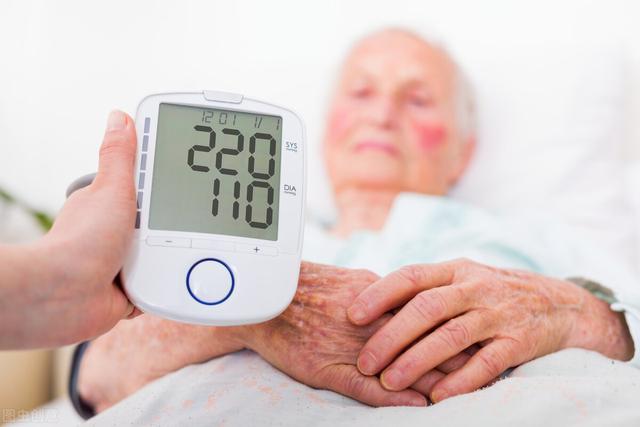
2. Diastolic pressure
- The heart enters diastolic pressure and stops ejecting blood. At this time the aorta continues to supply blood to the next level of blood vessels, the more the aorta supplies blood to the periphery, the less pressure the blood puts on the aorta, this is well understood. By the end of the diastolic phase of the heart, the pressure of the blood on the aorta is minimized and this pressure isdiastolic blood pressure。
3. Different ages, different characteristics of blood pressure
- Some people may notice that younger people with high blood pressure tend to have higher diastolic blood pressure, and sometimes high systolic blood pressure is rather insignificant. Some older people, on the other hand, tend to have normal diastolic blood pressure and more high systolic blood pressure.
- This is related to the elasticity of the aorta and the resistance of the peripheral vasculature, which is higher in young people with good aortic elasticity. As a result, high diastolic blood pressure is more pronounced. In the elderly, on the other hand, the aorta is poorly elastic and is characterized by a simple increase in systolic blood pressure.
- Diastolic blood pressure decreases gradually when age is greater than 55 years.
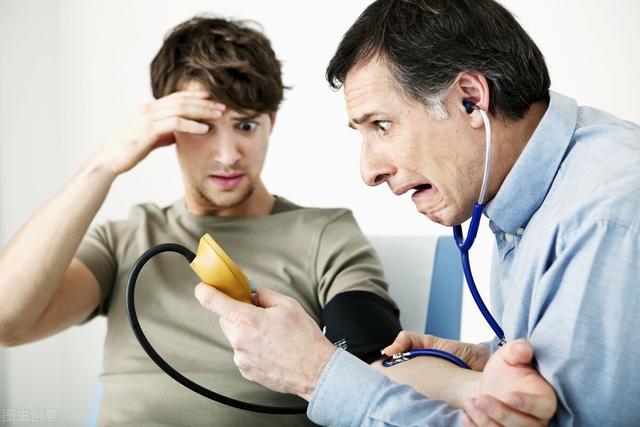
Which is more important, or more harmful, high or low pressure?
For people with high blood pressure, it is equally important to have high and low blood pressure up to standard, meaning that the risk of cardiovascular disease is about the same for both. A large study published this year in the world's leading journal, New England, provides the answer.
- The data for the study came from Koreans, and the study included 6,423,000 young Koreans aged 20-39 years, who were enrolled in the study from 2003-2007. The median follow-up time amounted to 13.2 years, and 44,070 new cases of cardiovascular disease occurred during the study period.
- The results of the study: 1) Even when blood pressure is mildly elevated, before reaching the threshold for diagnosing hypertension (high pressure 120-129 mmHg, low pressure less than 80 mmHg), cardiovascular risk is already elevated by 14%.
- 2) People with just high blood pressure elevated to 130-139 mmHg had a 36% elevated cardiovascular risk.
- Those with elevated diastolic blood pressure of 80-89 mmHg alone had a 32% elevated cardiovascular risk.
- If both systolic and diastolic blood pressure are elevated, then the risk is further increased.Grade 1 hypertension(130-139/80-89 mmHg), cardiovascular risk was elevated by 67%; in people with grade 2 hypertension (≥140/90 mmHg), cardiovascular risk was twice as high as in healthy people.
- To clarify, the study's diagnostic criteria for hypertension were adopted from the United States, and greater than 130/80 mmHg was diagnosed as hypertension.
Although low and high pressures are equally important to the risk of cardiovascular disease, the focus during antihypertensive therapy should be on the attainment of high pressures. Why?
- This is because high pressure can easily induce some acute events, such as a sudden rise in blood pressure, leading to plaque rupture, causing cerebral infarction, acute myocardial infarction, or cerebral hemorrhage due to rupture of an angioma caused by a sudden rise in blood pressure.
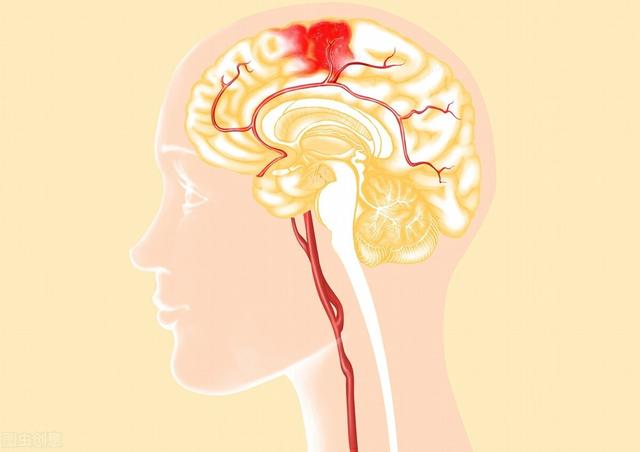
Summary:
- High and low pressures are equally important as risk factors for cardiovascular disease. However, systolic blood pressure also plays a causative role and is the equivalent of the last straw that breaks the camel's back. Therefore, it is the attainment of high pressure that is the key concern during antihypertensive therapy.
1. What is high pressure? What are the influencing factors?
High blood pressure, also known as systolic blood pressure, is generally said to be diagnostic of hypertension, that is, elevated high pressure. There are two factors that affect high blood pressure, one is the contractile function of the heart, and the other is the cushioning function of the aorta. In normal people, if the buffering function of the aorta is good, when the heart contracts and ejects blood, the aorta can play a good buffering function, reserve the kinetic energy of the heart's contraction, and then release it when the heart diastole, so as to keep the blood pressure flowing forward continuously.
And when these two points mentioned above are abnormal, the body's high pressure will then rise or fall. For example, when a person is excited, the contractility of the heart is strengthened, and this is when the high pressure tends to rise. And when a person has a myocardial infarction, especially an anterior wall myocardial infarction, it is very difficult for many people to have their high pressure go back up because of the impaired contractility of the heart. All of this is caused by the impact on the contractile function of the heart. And if a person's arteries aging, elasticity decline, this time to see the performance of high pressure is also elevated, because the elasticity of the large arteries fell well.
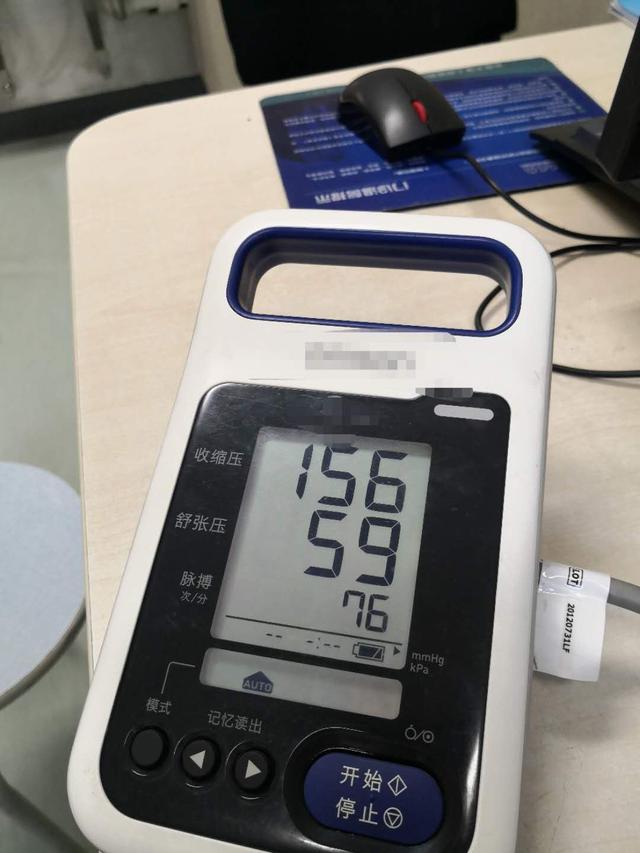
2. What is low pressure? What are the influencing factors?
Low blood pressure, also known as diastolic blood pressure, is generally said to be diagnostic of hypertension, which is elevated low pressure. There are many factors that affect low pressure, and it is more often seen as a result of increased peripheral vascular resistance. In normal people, if the peripheral vascular resistance is normal, it is very difficult to see its low pressure elevated, low pressure is a lot of high is suggestive of your blood vessel elasticity is okay, but because of a variety of factors lead to the peripheral arterial resistance is elevated, and so the low pressure is elevated on the production of. For example, young and middle-aged hypertension is often this characteristic, the main reason is because young and middle-aged hypertension patients vascular elasticity is good, various reasons lead to its peripheral resistance is high, then there will be a situation of high low pressure, and this kind of low-pressure elevation is not easy to use drugs to improve the situation.
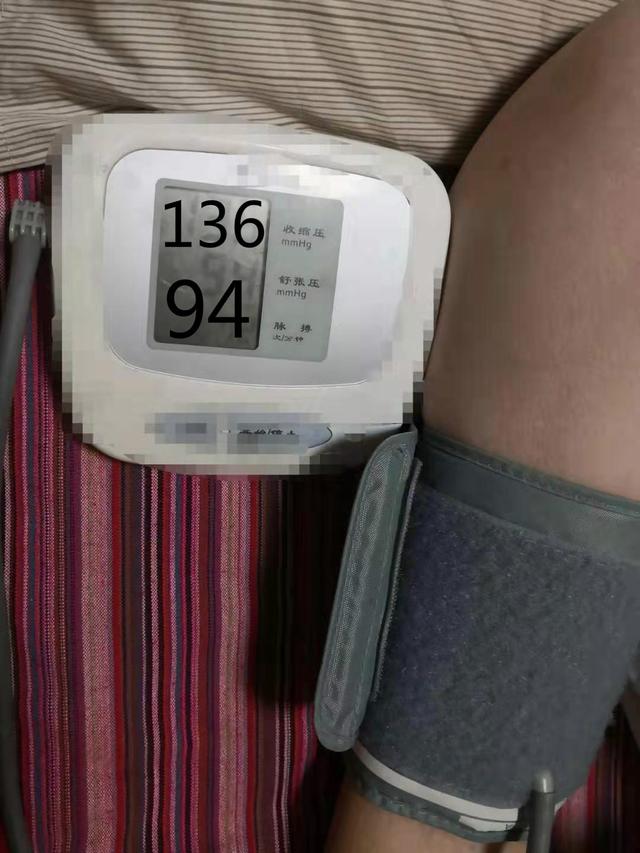
3. Is high pressure important, or low pressure important? Which is more harmful?
For many people with high blood pressure, many people have this question in mind. In fact, some years ago, even the medical profession have paid more attention to high pressure, for low pressure for a long time did not pay attention. But with the development of medicine, doctors gradually realize that the danger of high low pressure is not worse than high pressure. So, to this day, if you let Dr. Zhang say, then I say that high pressure and low pressure is just as important, and its harmfulness are very big, which one is elevated can not be ignored.
In fact, both high pressure and low pressure are important, which one is high is very harmful, so hypertensive patients usually need to pay attention to both lowering the elevated high pressure and lowering the elevated low pressure. I hope this article can help you.
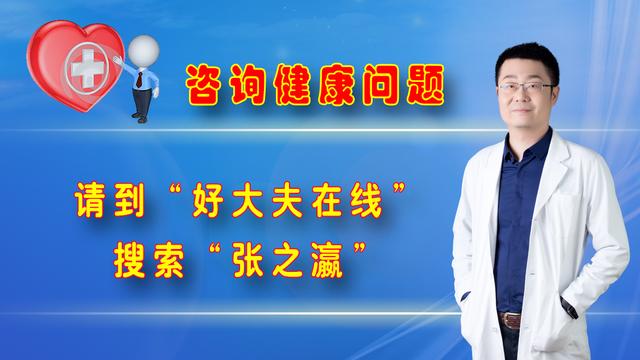
Many people have misconceptions about blood pressure!
I am a cardiovascular doctor, my mother is also a hypertensive patient, my mother early high pressure is high, low pressure is normal; I advised her to take medication, but my mother said: people said, high pressure is fine, low pressure is dangerous, my low pressure is not high, and there is no discomfort, do not need to take medication.
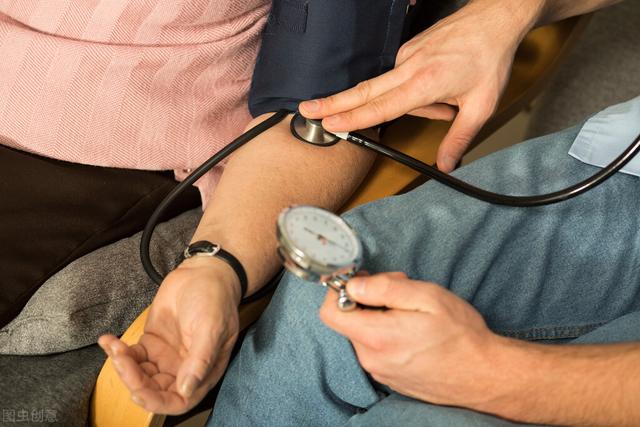
I said: Who said that? Your son, who keeps a cardiovascular doctor, gives you words that you don't believe, and you have to believe the words of a messy person.
After many rounds of struggle, I eventually prevailed and my mom started taking blood pressure medication to control her blood pressure.
So what is the difference between looking at high pressure or low pressure in our blood pressure?
I. Blood pressure

Since blood pressure includes both high and low pressure, it is natural that both are useful.
Our blood pressure is mainly affected by the heart, the blood vessels, the blood inside the vessels, and more specifically, also by how fast or slow the heart beats, the elasticity of the blood vessels, and how much blood is inside the vessels.
So what's the difference between high and low pressure?
II. High pressure, also known as systolic blood pressure

Our professional term is called systolic blood pressure, which is what we usually call high pressure, and even many common people call high pressure. The normal range of high pressure in our country is 90-140mmHg, that is, if there are no special circumstances, our high pressure is between 90-140mmHg, which is considered in the normal range. Of course, the normal range does not mean the ideal level, the ideal level of high pressure in adults is below 120mmHg in this range.
High pressure is also called systolic pressure, the contraction mentioned here is the contraction of the heart; the moment the heart contracts, the aorta and other large blood vessels dilate under pressure, and the pressure generated by the blood at this time, is high pressure. Simply understand systolic pressure is the pressure generated by the heart.
III. Low pressure, also called diastolic pressure
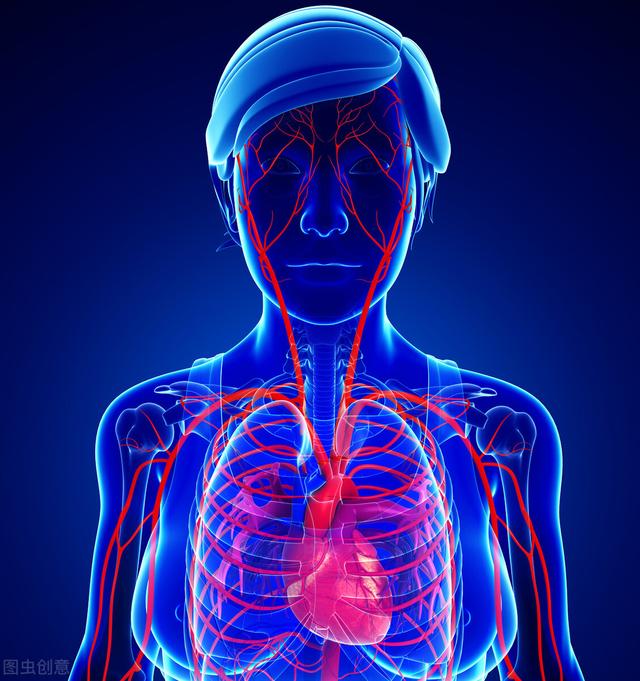
Our professional term is called diastolic blood pressure, which is what we usually call low pressure, and even many common people call it small pressure. The normal range of high pressure in our country is 60-90mmHg, that is to say, if there is no special circumstances, our high pressure is between 60-90mmHg, which is considered in the normal range. Of course, the normal range does not mean the ideal level, the ideal level of high pressure in adults is below 80mmHg within this range.
The purpose of the heart contraction is to transport blood to the whole body, the heart contraction, followed by diastole, at this time has flowed into the arteries of the blood, relying on the wall of the blood vessel elasticity and tension, to return to the heart, the wall of the blood vessel wall elasticity and tension of the blood vessel wall is still there is a pressure, this pressure is called the diastolic pressure low pressure. Simply understand the diastolic pressure is the pressure generated by blood vessels.
IV. On which basis can you tell if you have high blood pressure?
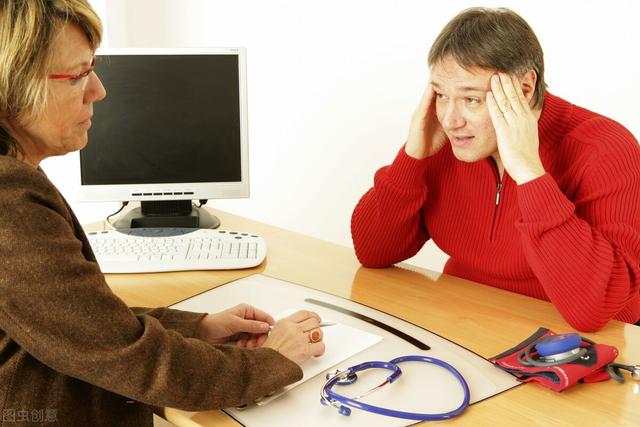
Hypertension guidelines state that we are hypertensive if our high pressure is ≥140 mmHg, or/and our low pressure is ≥90 mmHg.
In other words, whether the high pressure is elevated, the low pressure is elevated, or both the high and low pressure are elevated, it is called hypertension. Hypertension is categorized as: hypertension with elevated systolic blood pressure alone, hypertension with elevated diastolic blood pressure alone, and hypertension with both elevated systolic and diastolic blood pressure.
So now does everyone understand?
Both high and low pressures should be referenced, neither one is high enough to be hypertensive.
V. Which is more important?

Studies have found that for those with high blood pressure:
For every 5 mmHg reduction in diastolic, or low, blood pressure, there is a 40% reduction in the risk of cerebral infarction and cerebral hemorrhage, and a 14% reduction in the risk of coronary heart disease, angina pectoris, and myocardial infarction.
Every 10 mmHg reduction in systolic, or high, pressure reduces the risk of cerebral infarction and cerebral hemorrhage by 30%, and reduces the risk of coronary heart disease, angina, and myocardial infarction by 23%.
So, both high and low pressure are important, and whichever one is elevated, we have to find a way to bring it down to normal levels.
When measuring blood pressure, we tend to come up with two values; the higher one is the systolic blood pressure, which we sometimes refer to as high pressure, and the lower one is the diastolic blood pressure, which we also refer to as low pressure. So, is it important to determine the risk of abnormal blood pressure, the high pressure or the low pressure? Let's discuss this aspect with you today.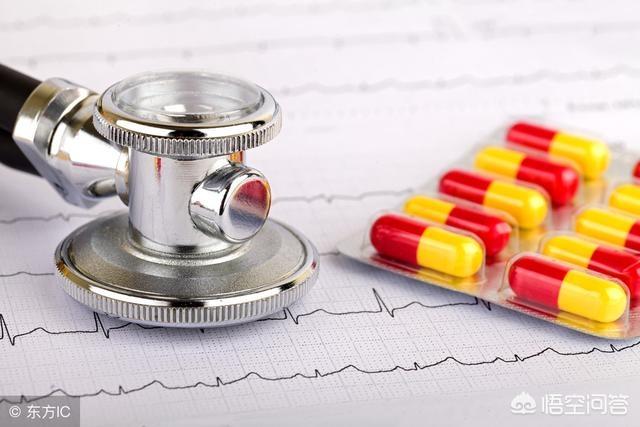
Whether it's high or low pressure, an abnormality deserves attention
Let's take a look at why systolic and diastolic blood pressure is high and low. Blood pressure in the human body through the heart and arteries and veins of the blood circulation system for the continuous cycle, the heart contraction, blood pumped from the heart into the arteries, the blood vessel wall to produce a certain side pressure, the blood vessels are subjected to a higher pressure, called systolic blood pressure (high pressure), when the heart is diastolic, the blood back to the heart of the end of the blood that has been into the arteries of the blood is still continuing to flow, the blood vessel wall is still subjected to a certain pressure, the blood pressure value is called diastolic pressure (low pressure), this time called diastolic pressure (low pressure). When the heart is in diastole and the blood has returned to the heart, the blood still continues to flow in the arteries, and the walls of the blood vessels are still subjected to a certain amount of pressure.
Systolic and diastolic blood pressure, is a response to different stages, the blood vessel wall pressure indicators, for cardiovascular health risk assessment are very important indicators, although from the cardiovascular risk assessment, clinical research data, etc., systolic blood pressure rise, for the body's health hazards are greater, but also more difficult to control, but many young and middle-aged friends appear simple diastolic blood pressure is high, should not be ignored, this is the body's This is a warning message given by the body, many friends do not pay attention to the simple low pressure high, within a few years will develop into high systolic diastolic blood pressure are high hypertension. As for the case of elevated systolic and diastolic blood pressure, according to the severity of hypertension, timely life interventions, reasonable application of medication control, to control both high pressure and low pressure, is to reduce the health hazards caused by high blood pressure at all.
High- and low-pressure control focuses differently in different populations
In many young and middle-aged people, there are often cases where the low pressure is high and the high pressure has not exceeded the standard, such as the case of blood pressure 130/100, for which it indicates that the blood pressure has begun to deviate from the normal, and it should be given enough attention. Elevated diastolic blood pressure, indicating that our blood vessel elasticity is still good, but due to the impact of certain factors, there is a slowing of blood flow, heartbeat accelerated and other aspects of the problem, in this case, pay more attention to life interventions, contact with anxiety, tension, maintain a low-salt light diet, control of blood lipids and blood glucose indexes, strengthen the exercise, maintain a good work and rest, smoking and limiting alcohol, targeted improvement of these aspects, will often have a better effect on the diastolic blood pressure. The diastolic blood pressure will often be improved by targeting these areas. If there is no major improvement in overall blood pressure through strict self-discipline, you may also consider taking Prilosec or sartans, or Betalucil to control high diastolic blood pressure.
For the elderly friends, especially the older elderly friends, such as the age of more than 75 years old, in this time, with the aging of the body, usually the elasticity of the blood vessels are relatively poor, at this time, the diastolic blood pressure usually do not exceed the standard, hypertension patients in this case, there is often a high systolic blood pressure, the diastolic blood pressure is normal or low, the difference in the pressure of the situation is more common, in this case, control the systolic blood pressure is very important, and do not have to worry about taking antihypertensive drugs will lead to further reduction of diastolic blood pressure is enough. In this case, it is very important to control the systolic blood pressure, and there is no need to worry about taking antihypertensive drugs, which will lead to a further decrease in diastolic blood pressure, but only need to reasonably apply the drugs to control the systolic blood pressure down will be enough. Age-related hypertension problems, diphenhydramine drugs are very good drugs, reasonable combined application of drugs, such as sartan or prilosec + diuretics, or sartan or prilosec + diphenhydramine drugs, diphenhydramine drugs + lorazepam, etc., are good combinations.
In summary, for the control of blood pressure, whether it is low pressure that is high pressure high problem, are worth paying attention to, for different hypertensive people, hypertension control goals are different, control means and medication are also different, the specific medication program please follow the doctor's instructions according to the specific situation to determine.
[Professional doctor to answer your questions
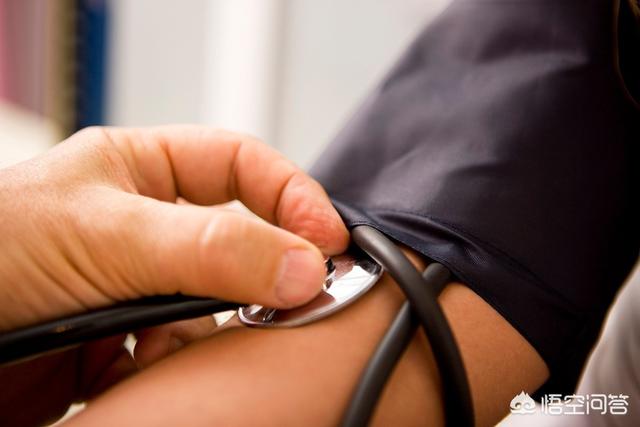
Speaking of high blood pressure may be many people do not think, data show that: every four people do not have a person with high blood pressure, just a lot of people do not know they have high blood pressure. In the hypertensive population, there are systolic blood pressure (high pressure) and diastolic blood pressure (low pressure) are elevated, only elevated systolic blood pressure or simply diastolic blood pressure is elevated different performance, what is the difference between them? What kind of hypertension is more dangerous?
Let's start by understanding how blood pressure is regulated in the human body. Blood pressure, simply put, is the pressure exerted on blood vessels during the flow of blood, and this pressure is influenced by two major categories of factors. One is caused by the body's own tissues and organs, and the other is the result of regulation through its own nerves and hormones.
Tissues and organs are mainly the heart and blood vessels, the heart through constant contraction and diastole of the blood pumped into the blood vessels, giving the blood flow a certain amount of pressure to promote the circulation of blood in the whole body, when the heart contraction of the blood vessels will be expanded to buffer the pressure, the pressure on blood vessels at this time that is systolic blood pressure; cardiac diastole when the blood flow back to the blood vessels, the pressure on the blood vessels to reduce rebound at this time that is the pressure of diastolic blood pressure.

Under normal circumstances, blood pumping out and returning during heart contraction and diastole are in a state of dynamic equilibrium, and the pressure in blood vessels is maintained at a stable level, but when this dynamic equilibrium is broken, such as the heart pumping out more and returning less, or the blood vessels undergo atherosclerosis, the elasticity of blood vessels decreases, and on the one hand, they can't be dilated with the increase in pressure when the heart is pumping out blood, which leads to the increase in systolic blood pressure, and at the same time, the ability of blood vessels to retract decreases, which also leads to the increase in diastolic blood pressure. At the same time, the ability of blood vessels to retract decreases, which also leads to an increase in diastolic blood pressure, which is the most classic manifestation of hypertension.
In addition, the body also exists in the nerve, hormone regulation of blood pressure mechanism, for example, in the encounter of intense emotional changes, the body sympathetic nerve excitability increases, vasoactive substance secretion increases, can stimulate vasoconstriction and lead to an increase in blood pressure, the effect of this effect on the diastolic blood pressure will be stronger.

This shows that systolic blood pressure is more affected by tissue and organ lesions than diastolic blood pressure, which is also the reason why older people with more serious atherosclerosis have higher systolic blood pressure, while middle-aged and young people with higher diastolic blood pressure due to greater stress in their work and life are more obvious. Simply put, elevated systolic blood pressure indicates the presence of organic lesions, while elevated diastolic blood pressure indicates the presence of mental and emotional changes, and obviously elevated systolic blood pressure is more harmful than elevated diastolic blood pressure.
Because of this, diastolic blood pressure is often elevated as the initial manifestation of hypertension in the early stages of its development. Without intervention and control, long-term elevation of diastolic blood pressure will lead to the rapid development of vascular sclerosis, resulting in a continuous increase in systolic blood pressure, and ultimately the occurrence of classical hypertension, in which the systolic blood pressure is elevated at the same time as the diastolic blood pressure.
In conclusion, both elevated systolic and diastolic blood pressure should be treated with active interventions. Especially for the elderly, hypertensive and diabetic patients, strict control of systolic blood pressure plays an important role in avoiding further development of vascular and organ pathologies.
After measurement, learn about the diagnostic criteria for hypertension in the Chinese Guidelines for the Prevention and Treatment of Hypertension: systolic blood pressure greater than 140 mmHg or diastolic blood pressure higher than 90 mmHg.
I hope this answer can help you, welcome to click on the attention and leave a message, together to learn and exchange more health knowledge.
This question and answer are from the site users, does not represent the position of the site, such as infringement, please contact the administrator to delete.